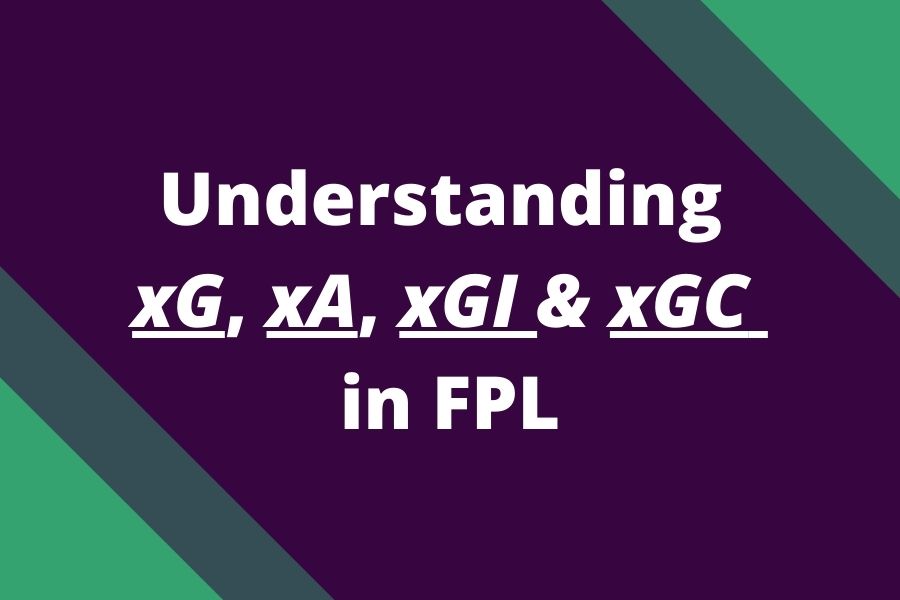
Fantasy Premier League enthusiasts often come across various metrics and statistics that are used to evaluate players and teams.
Among these, expected stats: xG, xA, xGI, and xGC stand out as particularly important for those looking to gain an edge in their fantasy decisions.
Let’s look at what these stats mean in FPL and how to use them.
xG (Expected Goals)
Definition: xG quantifies the quality of a goal-scoring opportunity, representing the likelihood that a particular shot will result in a goal.
Importance: By analyzing xG, FPL managers can determine which players are getting the best chances to score.
A player with a high xG but few actual goals might be due for a scoring streak, suggesting they could be a valuable pick. Or that he is just a poor finisher.
On the other hand, a player with a low xG but many actual goals indicates that player is overperforming, and is converting difficult chances or perhaps scoring from positions where goals are less expected. This might suggest that the player possesses a unique skill set or that trend might be hard to sustain over the long term, so managers should exercise caution and monitor the player’s performance closely.
Read more: What is xG and how to use it in FPL?
xA (Expected Assists)
Definition: xA measures the quality of a pass that leads to a shot, indicating the likelihood that it will result in an assist.
Importance: Just as xG helps identify potential goal-scorers, xA helps pinpoint players who are creating significant chances for their teammates. A high xA indicates a player’s ability to set up scoring opportunities, making them valuable for FPL points from assists.
xGI (Expected Goal Involvement)
Definition: xGI is the sum of a player’s xG and xA, representing their overall involvement in goal-scoring opportunities.
Importance: xGI provides a holistic view of a player’s attacking contributions. Players with a high xGI are involved in both creating and finishing chances, making them potentially invaluable assets for FPL managers.
xGC (Expected Goals Conceded)
Definition: xGC estimates the number of goals a team is expected to concede based on the quality of chances they allow.
Importance: For FPL managers, xGC is crucial when evaluating defensive assets. A team with a low xGC is defensively solid, suggesting their defenders and goalkeepers might earn more clean sheets and, consequently, more FPL points.
Conclusion
Metrics like xG, xA, xGI, and xGC provide a deeper understanding of player and team performances beyond traditional stats like goals and assists. By incorporating these advanced metrics into their decision-making, FPL managers can make more informed choices, optimizing their teams for maximum points. Whether you’re a casual player or an FPL veteran, understanding these metrics can give you a competitive edge in your league.
![3 Best Captain Picks for FPL GW33 [Captaincy Index] fpl best captain picks](https://www.fantasyfootballreports.com/wp-content/uploads/fpl-best-captain-picks.jpg)


